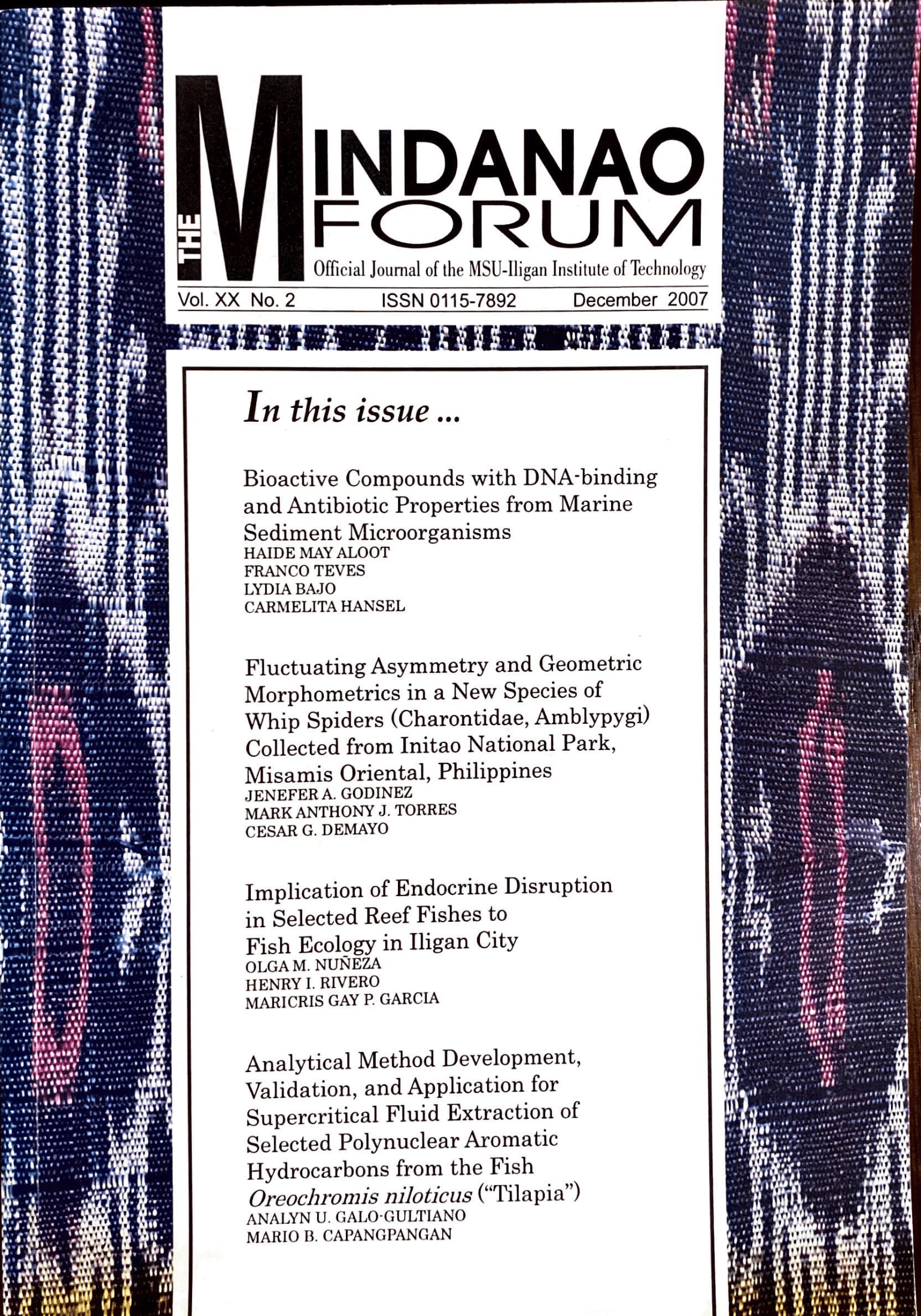Epidemiologic Trends of Community-Associated Methicillin-Resistant Staphylococcus aureus Among Non-Institutionalized Pediatric Populace of Iligan City
Keywords:
Staphylococcus aureus, mannitol salt agar, CoNS, coagulacoagulase-negative staphylococci, oxacillin, cefoxitin, vancomycin, erythromycin, clindamycinAbstract
Nasal surveillance swab cultures of one hundred fourteen pediatric subjects (70 day care attendees and 44 pediatric outpatients) of lligan City were gathered from April to December 2006 to determine staphylococcal colonization rates. Morphological and biochemical methods were employed for the characterization and presumptive identification of 327 strains that were isolated from the primary culture medium, mannitol salt agar (MSA). All recovered isolates were Gram positive staphylococci and affirmative of catalase reaction. Mannitol fermenting isolates corresponded to the number of strains which exhibited positive coagulase reaction and were presumptively identified as Staphylococcus aureus while the remaining non-mannitol fermenters were designated as coagulase-negative staphylococci. Seventy-three children harbored S. aureus in their anterior nares whereas 70 were colonized with CoNS. However, there is no significant correlation between S. aureus and CoNS colonization among the risk factors considered in the study (p>0.05).
Non-duplicate S. aureus (73) and coagulase-negative staphylococci (70) were tested for their susceptibility to oxacillin (1μg), cefoxitin (30μg), vancomycin (30μg), erythromycin (15 g), and clindamycin (2μg). Susceptibility to vancomycin was high among S. aureus strains (82%) whereas among coagulase-negative staphylococci posed great sensitivity to cefoxitin (60%).
The least effective drug in the eradication of S. aureus strains was erythromycin with resistance rate of 41% while clindamycin revealed high number of resistance strains (53%) among CoNS.
Twenty-one strains were oxacillin-resistant S. aureus however, only 13 of these were identified as true MRSA strains which exhibited resistance to both cefoxitin and oxacillin which were found among children with no contact among healthcare workers. Four MRSA strains were detected to be vancomycin-resistant as well. Resistance of MRSA to two or more antimicrobials was designated as multidrug resistant MRSA (MDR-MRSA, n=7) in which five MRSA strains have high resistance to both erythromycin and clindamycin (38%) and two strains resistant to erythromycin, clindamycin and vancomycin. There is no significant correlation between the susceptibility patterns and risk factors considered among the study populace (p>0.05).





